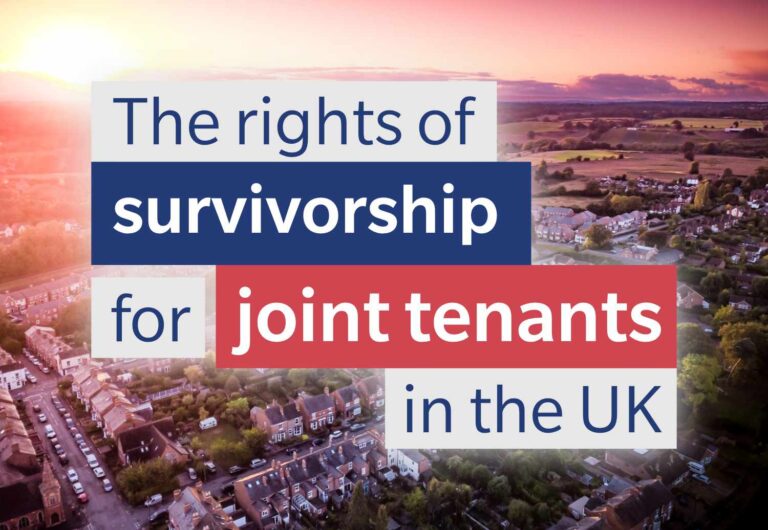For clients who are domiciled within the UK, or who are domiciled elsewhere but own property within the UK, the Residence Nil Rate Band (RNRB) is of key importance. This is the largest and latest change to UK estate planning in recent years, and since its introduction on 6 April 2017 a key trend in UK estate planning has revolved around making use of this allowance.
The RNRB is an additional inheritance tax (IHT) allowance to the current nil rate band (NRB) which currently stands at £325,000. It was introduced in stages and only reached its full amount of £175,000 starting from 6 April 2021. Like the ordinary NRB it is transferable, thus allowing the surviving spouse to make use of the allowance on their own death if it was unused on first death. This means that a married couple or civil partners may potentially pass up to £1m IHT free.
The availability of the RNRB is dependent upon a number of conditions being met. The deceased must have possessed a qualifying residential interest, all or part of this interest must be left to their direct descendants or a spouse of their descendants (“closely inherited”) and their estate must not exceed the taper threshold to a point that the entire RNRB is taped away. This leaves a person with no children, stepchildren or adopted children unable to qualify for the relief. It is also unavailable to many high-net-worth individuals.
Tapering
The RNRB is lost if the deceased’s estate far exceeds the taper threshold. If the deceased’s net estate exceeds £2 million at death, RNRB will be tapered away at a rate of £1 for every £2 over this threshold.
The effect of this is that no RNRB is available for estates with a net value in excess of £2,350,000, or £2,700,000 at the date of death of a surviving spouse where 100% of the RNRB was available to transfer from the deceased spouse.
Tapering can act to reduce the amount of RNRB that is actually available to transfer on the death of the surviving spouse. This is the case even if the RNRB was not used on first death.
Qualifying for the RNRB
With the introduction of the RNRB, a number of new definitions were added to the UK IHT legislation, the Inheritance Tax Act 1984:
A “Qualifying residential interest” – An interest in a dwelling house which has been the person’s residence at some point during their period of ownership. (Section 8H Inheritance Tax Act 1984). This definition will include a property that has been purchased and used as a residence but at the time of death was rented out, but it does not include a property purchased as a buy to let.
“Closely inherited” – Inherited by will, intestacy, or survivorship by one or more of the person’s direct lineal descendants. (Sections 8J & K IHTA 1984). Also, where the interest is left on trust where the descendant is treated as owning the asset. This means a property left to a direct descendant via a bare trust, immediate post death interest, bereaved minor’s or bereaved young person’s trust qualifies for the relief.
“Direct lineal descendants” – Children, grandchildren, and remoter issue as well as their spouses or civil partners. Also includes stepchildren, adopted children, foster children, and children of which the person had guardianship while they were under 18.
If estate exceeded the taper threshold, then the unused RNRB that is available to transfer will be reduced. If the first to die’s estate exceeded £2,350,000 then there will be no RNRB to transfer.
The RNRB may only be applied to a single property. If a person has more than one qualifying residential interest that could qualify for the relief, then their personal representatives must nominate a property to apply the RNRB to.
The property itself does not need to be located in the UK. It is possible for the RNRB to be applied to a foreign property provided all of the above requirements are met. However, this will be affected by the deceased’s domicile. If a person is domiciled in the UK, their worldwide estate is subject to UK IHT and so the RNRB may be applied to a property that is located abroad. If a person has a non- domiciled status, then their property must be located in the UK for the RNRB to apply, as only their UK estate will be subject to UK IHT.
Modern Estate Planning Techniques
Since the introduction of the RNRB, there has been a decline in the number of clients utilising Flexible Life Interest Trust (FLIT) and Discretionary Wills to protect their interest in real property. This is due to the fact that these types of Trust fail to meet the requirement that the qualifying residential interest is closely inherited.
There are therefore two modern solutions to protect the property with a trust while also qualifying for the RNRB. The first is to separate the qualifying residential interest from the rest of the estate and deal with this separately by placing it into an immediate post death interest trust for the surviving spouse, with the children nominated to inherit it immediately on the spouse’s death. This allows the residue of the estate to fall into the FLIT or discretionary trust to allow protection for generations to come, while still qualifying for the RNRB.
The second is to still utilise the FLIT over the whole estate but limit the trustees’ discretionary powers in a way that means they cease on second death. This retains all of the flexibility of the FLIT over all assets while the surviving spouse is alive, and also over all assets except the property after their death.
Both approaches unfortunately come at the cost of less protection over the property, as any protection can’t be extended beyond second death. NRB discretionary Trusts have also seen a resurgence as a result of the RNRB. This type of Trust planning had largely declined for married couples since the ability to transfer NRB was introduced in 2007, but they are now seeing a new use to help avoid loss of the RNRB due to tapering.
This use of the NRB trust involves directing assets away from the surviving spouse so that on second death, their estate doesn’t exceed the taper threshold. If leaving assets on first death directly to the surviving spouse or to an immediate post death interest for them is likely to result in pushing their estate over the taper threshold, then there may be a benefit to directing assets to a NRB trust on first death instead. On second death, the assets in the NRB trust created on first death will be outside of the estate value for IHT and if the result is that the estate is kept below the taper threshold then the RNRB is not lost, provided of course all other requirements for the RNRB are met on second death and the property is being closely inherited at that point.

Siobhan Smith
Lead Tutor for The College of Will Writing
The Society of Will Writers, UK














